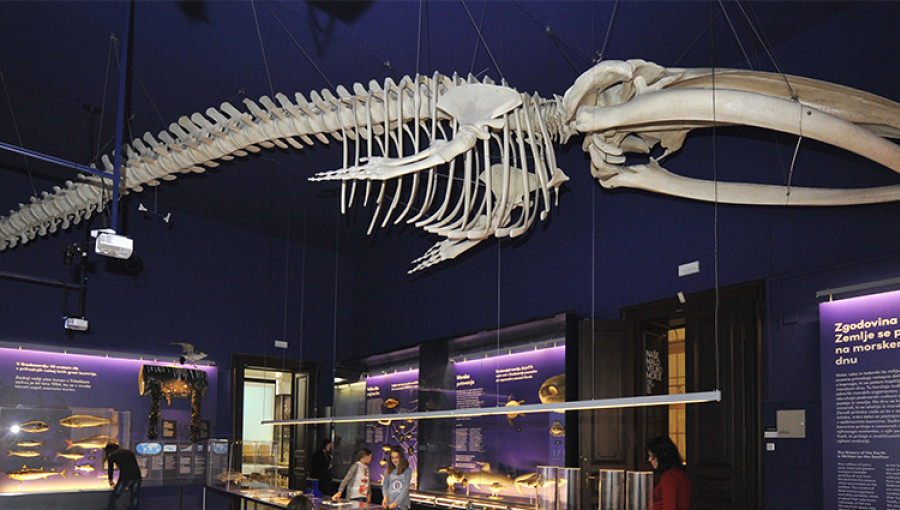World-famous attractions in Ljubljana
There are several world-famous attractions on display in Ljubljana. Do you know them? Discover a wealth of precious exhibits without leaving the country.

The International Centre of Graphic Arts, the Museum of Modern Art, the City Museum of Ljubljana, the National Museum of Contemporary History, the Museum of Architecture and Design, the National Gallery, the National Museum of Slovenia, the Natural History Museum of Slovenia, the Slovene Ethnographic Museum, the Slovenian Theatre Institute/Theatre Museum and the Slovenian School Museum have each picked out from their collections a single star attraction of worldwide fame. This summer you can see all of them for a single, affordable price: €8.00 for an individual ticket or €16.00 for a family ticket. The offer is valid from 1 July to 30 August, tickets can be purchased at any of the participating museums.
And what are these superlative examples of movable heritage that you simply must not miss in the museums and galleries of our capital city this summer? A Neanderthal flute, a pile dwellers wheel, Chinese figurines, a ceremonial peace pipe, the Škofja Loka Passion Play, the Slovene Impressionists, Zoran Mušič, an old schoolroom, Stojan Batič, an Enigma encryption machine, Marina Abramović and the K67 kiosk.

INTERNATIONAL CENTRE OF GRAPHIC ARTS
The 1950s saw unprecedented development of the art scene in Slovenia. New, powerful figures emerged, such as the sculptor Stojan Batič, while events such as the International Biennial of Graphic Arts gave Ljubljana a cosmopolitan character.

CITY MUSEUM OF LJUBLJANA
The wheel is remarkable for the precision and ingeniousness with which it is made. The skilled pile-dweller who made it took into account the contraction and expansion of the wood and followed a clear logic when attaching and joining the various parts. The technological accomplishment and age of this find from Ljubljana’s Barje wetland (aka the Ljubljana Marshes) place it at the very pinnacle of world cultural heritage.

MUSEUM OF MODERN ART
Zoran Mušič is one of the internationally best-known artists of the twentieth century. His cycle of paintings We Are Not The Last is based on the artist’s own experience of a concentration camp, and its message is that such an experience should never again be repeated.

Museum of Contemporary Art Metelkova
Marina Abramović is famous throughout the world as the “first lady of performance art”. Rhythm 0 is one of her most radical performances, in the course of which she even risked her life. The artist donated it to the Museum of Modern Art for the international collection Arteast 2000+.

National Museum of Contemporary History
Enigma is an encryption machine that was used by the German armed forces. Its code was broken by the Allies during the course of the Second World War, an achievement that is said to have hastened the end of the conflict. The Enigma machine at the National Museum of Contemporary History is a standard three-wheel version.

Museum of Architecture and Design
With its plastic shell, this kiosk became a familiar feature on street corners and from the 1960s onwards was found in numerous urban centres of the former Yugoslavia and Europe and further afield.

NATIONAL GALLERY
The birth and development of a unique strand of European modernism are presented through 100 ambitious works of art inspired by Munich, Vienna, Paris and, above all, the landscape and character of Slovenia. Grohar, Jakopič, Jama, Sternen and other masters.

NATIONAL MUSEUM OF SLOVENIA
The oldest musical instrument in the world, a 60,000-year-old Neanderthal flute from the Divje Babe archaeological site in north-western Slovenia is one of the most significant milestones in the development of humankind, since it proves that the Neanderthals were innovative and sensitive people, capable of artistic expression.

NATIONAL MUSEUM OF SLOVENIA – METELKOVA
These Chinese figurines were made in around 1763 by the celebrated Munich porcelain designer Franz Anton Bustelli. Part of a set of table decorations (the remainder of which are missing), they represent one of the high points of Bustelli’s work and at the same time of European porcelain design.

NATURAL HISTORY MUSEUM OF SLOVENIA
The discovery of the 13-metre carcass of a young female fin whale floating in the sea off the coast of Slovenia in 2003 was a remarkable one, as was the procedure by which experts obtained the complete skeleton from the decomposing carcass.

SLOVENE ETHNOGRAPHIC MUSEUM
Thanks to the efforts of the missionary Friderik Baraga, Slovenia got its first non-European museum collection in as early as 1837. The items in the collection come from the Great Lakes region of North America. Most notable among them is a ceremonial pipe, one of the few surviving examples anywhere in the world.

SLOGI - Theatre Museum
The Škofja Loka Passion Play, a landmark of Slovene theatre, is among the oldest still-performed processional plays in Europe and is recognised as part of the intangible cultural heritage of humanity. Discover the theatrical and historical context of the Passion Play, which is due to be performed once again in 2021, the year of its 300th anniversary.

Slovenian School Museum
Visit this recreation of an old school classroom from the second half of the nineteenth century and have a go at writing with a quill pen or using a slate tablet. A notable feature of the old schoolroom are punishments that today (fortunately) we only see in museums.
